HSLS offers classes on database searching, software applications such as Adobe Photoshop, bibliographic management, molecular biology and genetics, and library orientations. For more information visit the online course descriptions.
Classes are held on the first floor of Falk Library (200 Scaife Hall) in classroom 1 and conference room B, and on the second floor in the Computer and Media Center classroom 2. Some classes are also held in the conference room at UPMC Shadyside Libraries. All classes are open to faculty, staff and students of the schools of the health sciences at the University of Pittsburgh and UPMC.
No registration is required for any of these classes. Seating for classes is first-come, first-served, until the class is full. Classes marked with an asterisk (*) qualify for American Medical Association Category 2 continuing education credit.
Class schedules are subject to change. Please consult the online class calendar for the most current information.
HSLS ORIENTATION
Introduction to HSLS Resources and Services at Falk Library
(Meet inside entrance to Library)
Friday, January 21 1-2 p.m.
Offered upon request to groups or individuals. Call 412-648-8796.
Introduction to HSLS Services at UPMC Shadyside
Offered upon request to groups or individuals. Call 412-623-2415.
Finding Full-Text Articles at UPMC Shadyside
Offered upon request to groups or individuals. Call 412-623-2415.
SEARCHING DATABASES
PubMed Basics* (Falk Library Classroom 1)
Tuesday, January 18 10-11:30 a.m.
Tuesday, February 15 10-11:30 a.m.
Focus on Behavioral Medicine: Searching in PsycINFO* (Falk Library Classroom 1)
Tuesday, February 22 10:30 a.m.-noon
MOLECULAR BIOLOGY AND GENETICS RESOURCES
Genome Browsers* (Falk Library Classroom 2)
Wednesday, January 12 1-3 p.m.
Locating Gene/Protein Information* (Falk Library Classroom 2)
Wednesday, January 19 1-3 p.m.
SNPs & Genetic Variation* (Falk Library Classroom 2)
Wednesday, January 26 1-3 p.m.
Cancer Informatics* (Falk Library Classroom 2)
Wednesday, February 2 1-3 p.m.
Introduction to Vector NTI* (Falk Library Classroom 2)
Wednesday, February 9 1-3 p.m.
Pathway Analysis Tools 1* (Falk Library Classroom 2)
Wednesday, February 16 1-3 p.m.
Pathway Analysis Tools 2* (Falk Library Classroom 2)
Wednesday, February 23 1-3 p.m.
SOFTWARE TRAINING
EndNote Basics (Falk Library Classroom 2)
(Note: This class is usually full. Please arrive 15 minutes in advance to ensure seating.)
Tuesday, January 11 8:30-10:30 a.m. (UPMC Shadyside Libraries)
Thursday, January 13 10 a.m.-noon (Falk Library Classroom 2)
Wednesday, January 26 10 a.m.-noon (Falk Library Classroom 2)
Thursday, February 10 1-3 p.m. (Falk Library Classroom 2)
Tuesday, February 22 10 a.m.-noon (Falk Library Classroom 2)
Adobe Photoshop for Beginners (Falk Library Classroom 2)
Wednesday, January 12 9-11 a.m.
Thursday, February 10 9 -11 a.m.
PowerPoint for Beginners
Thursday, January 6 9-11 a.m (Falk Library Classroom 2)
Wednesday, January 26 9-11 a.m. (UPMC Shadyside Libraries)
Advanced PowerPoint for Presentations (Falk Library Classroom 2)
Thursday, February 3 9-11 a.m.
The WOW Factor: PowerPoint for Posters (Falk Library Classroom 2)
Wednesday, February 23 9-11 a.m.
Lunch With A Librarian
These informal, brown-bag lunches are held in Falk Library Conference Room B. Bring your own lunch. Drinks and dessert are provided. For more information visit the online descriptions.
Search Clinic
Monday, February 7 Noon-1 p.m.
Mobile MolBio: Apps for Scientists
Thursday, February 24 Noon-1 p.m.
Classes
Searching for Nursing Articles Using CINAHL (UPMC Shadyside Libraries)
Tuesday, February 15 11:30 a.m. – 12:30 p.m.
Thursday @ Three HSLS UPMC Shadyside Libraries Information Series
These informal sessions are held in the Conference Room at UPMC Shadyside Libraries.
Writing Integrity in the Digital Age
Thursday, January 27 3-4 p.m.
Advanced Google: Tips and Strategies for Getting More From Google
Thursday, February 24 3-4 p.m.
CUSTOMIZED CLASSES
Customized classes can be developed for your department, course, or other group.
LEARNING @ YOUR PACE
These online tutorials provide information on getting started at HSLS, focusing on the Web site and popular resources.
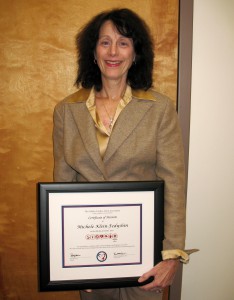 Research shows that the survival rate for those suffering cardiac arrest outside the hospital is only 7%.1 HSLS reference librarian Michele Klein-Fedyshin, who earned her RN last year, used an automatic external defibrillator (AED), along with cardiopulmonary resuscitation (CPR), to assist in the rescue of a Pitt professor who suffered a cardiac arrest at the University Club gym on April 15, 2010. Klein-Fedyshin and Dave Nanz, the responding Pitt police officer, were awarded a certificate of recognition at the annual meeting of the Sudden Cardiac Arrest Association (SCAA) on October 8, 2010.
Research shows that the survival rate for those suffering cardiac arrest outside the hospital is only 7%.1 HSLS reference librarian Michele Klein-Fedyshin, who earned her RN last year, used an automatic external defibrillator (AED), along with cardiopulmonary resuscitation (CPR), to assist in the rescue of a Pitt professor who suffered a cardiac arrest at the University Club gym on April 15, 2010. Klein-Fedyshin and Dave Nanz, the responding Pitt police officer, were awarded a certificate of recognition at the annual meeting of the Sudden Cardiac Arrest Association (SCAA) on October 8, 2010.
 The instruments were produced by Hermann Hernstein & Son. There are three key factors that identify the set as belonging to the Civil War era: (1) the mark of H. Hernstein & Son, which was used from 1862 to 1865, when the company was selling directly to the military under contract; (2) Herstein & Son’s address from 1855 to 1867, 393 Broadway in New York City, is engraved on the instruments; and (3)
The instruments were produced by Hermann Hernstein & Son. There are three key factors that identify the set as belonging to the Civil War era: (1) the mark of H. Hernstein & Son, which was used from 1862 to 1865, when the company was selling directly to the military under contract; (2) Herstein & Son’s address from 1855 to 1867, 393 Broadway in New York City, is engraved on the instruments; and (3)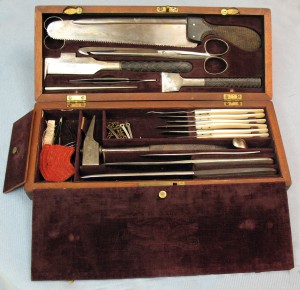 the wooden case contains a single sliding latch not found on any civilian instrument sets of the period.
the wooden case contains a single sliding latch not found on any civilian instrument sets of the period.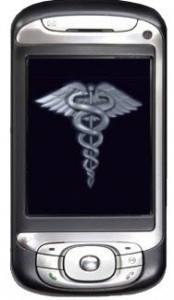
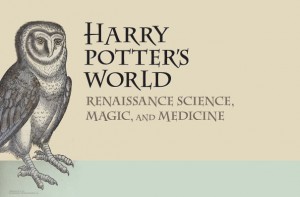
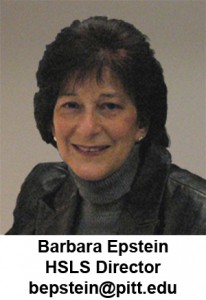 Libraries, by definition, are organized operations. We try to keep track of everything we do. We count our virtual and in-person visits, we count our loans, we count the number of reference questions received, and we count the number of educational sessions offered. We analyze whether these numbers are going up or down, and we scratch our heads to figure out what it all means.
Libraries, by definition, are organized operations. We try to keep track of everything we do. We count our virtual and in-person visits, we count our loans, we count the number of reference questions received, and we count the number of educational sessions offered. We analyze whether these numbers are going up or down, and we scratch our heads to figure out what it all means.
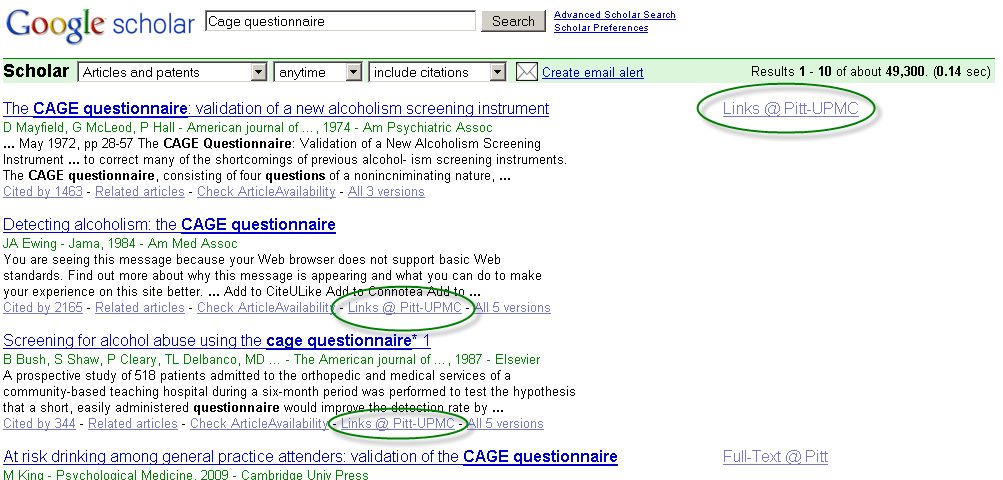
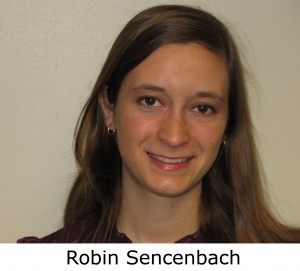 Robin Sencenbach earned her BA in English, with a minor in history, at Allegheny College. While at Allegheny College, she interned at the library where she helped move and organize special collections materials during the library’s renovation. Sencenbach also volunteered at the Heinz History Center as a tour guide and intern to the curators. She is interning in the Technical Services Department at Falk Library.
Robin Sencenbach earned her BA in English, with a minor in history, at Allegheny College. While at Allegheny College, she interned at the library where she helped move and organize special collections materials during the library’s renovation. Sencenbach also volunteered at the Heinz History Center as a tour guide and intern to the curators. She is interning in the Technical Services Department at Falk Library.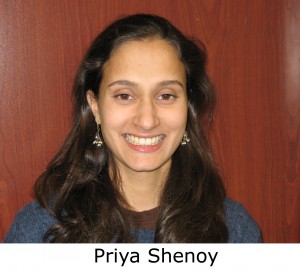 Priya Shenoy received her BS in nursing from the University of Pennsylvania. Shenoy worked as a staff nurse on a cardiac floor at Georgetown University Hospital and as a public health nurse. As an undergraduate, she worked in the circulation department at the University of Pennsylvania’s Charles Patterson Van Pelt Library. Before deciding to pursue a career in library science, Shenoy shadowed librarians at the National Library of Medicine, George Washington University’s Himmelfarb Health Sciences Library, and a public library. This past summer, she interned at Georgetown University’s Dahlgren Memorial Library, where she spent time in every department. Shenoy is interning in the Reference Department at Falk Library.
Priya Shenoy received her BS in nursing from the University of Pennsylvania. Shenoy worked as a staff nurse on a cardiac floor at Georgetown University Hospital and as a public health nurse. As an undergraduate, she worked in the circulation department at the University of Pennsylvania’s Charles Patterson Van Pelt Library. Before deciding to pursue a career in library science, Shenoy shadowed librarians at the National Library of Medicine, George Washington University’s Himmelfarb Health Sciences Library, and a public library. This past summer, she interned at Georgetown University’s Dahlgren Memorial Library, where she spent time in every department. Shenoy is interning in the Reference Department at Falk Library.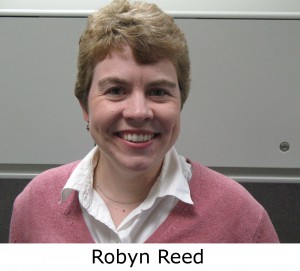 Robyn Reed, the 2010-2011 Trainee, earned a BS in medical technology and chemistry from SUNY Fredonia, an MS in pharmacology from SUNY Buffalo, and an MLIS from the University of Pittsburgh. Reed decided to pursue a career in bioinformatics because she’s interested in how computer applications can be utilized to disseminate pertinent information to specific populations. Last summer, Reed completed a consumer health field placement at UPMC Shadyside’s Hopwood Library. She is currently working with Dr. Titus Schleyer in the School of Dental Medicine on a dental informatics project. Reed will spend time in both the Falk Library Reference Department and the Molecular Biology Information Service.
Robyn Reed, the 2010-2011 Trainee, earned a BS in medical technology and chemistry from SUNY Fredonia, an MS in pharmacology from SUNY Buffalo, and an MLIS from the University of Pittsburgh. Reed decided to pursue a career in bioinformatics because she’s interested in how computer applications can be utilized to disseminate pertinent information to specific populations. Last summer, Reed completed a consumer health field placement at UPMC Shadyside’s Hopwood Library. She is currently working with Dr. Titus Schleyer in the School of Dental Medicine on a dental informatics project. Reed will spend time in both the Falk Library Reference Department and the Molecular Biology Information Service.